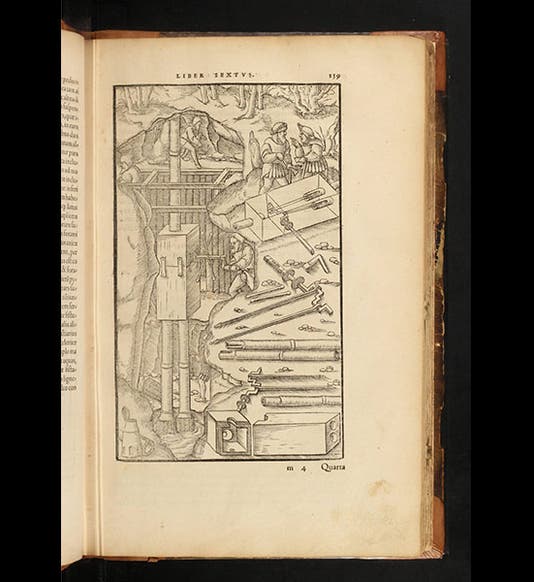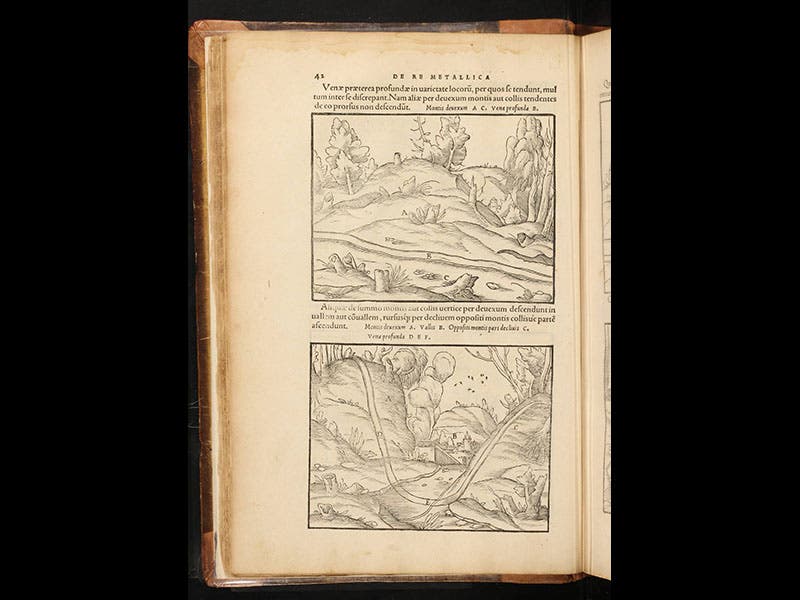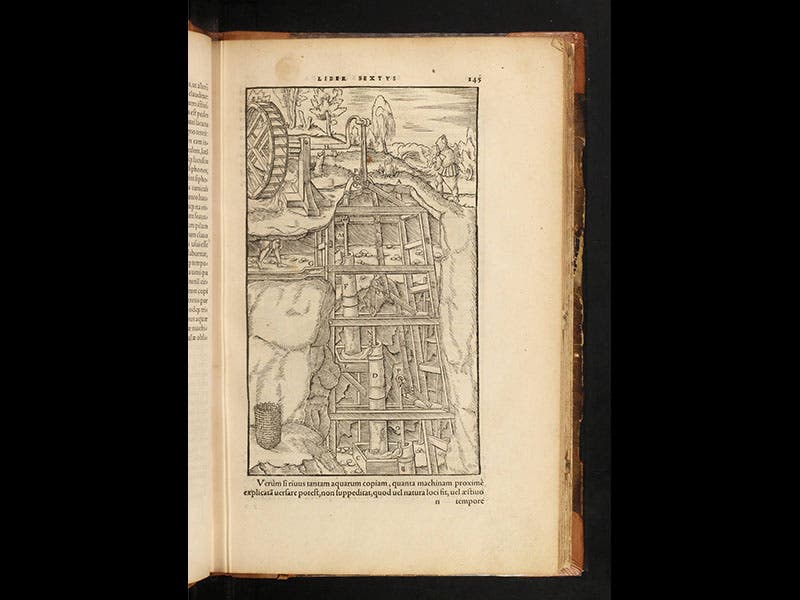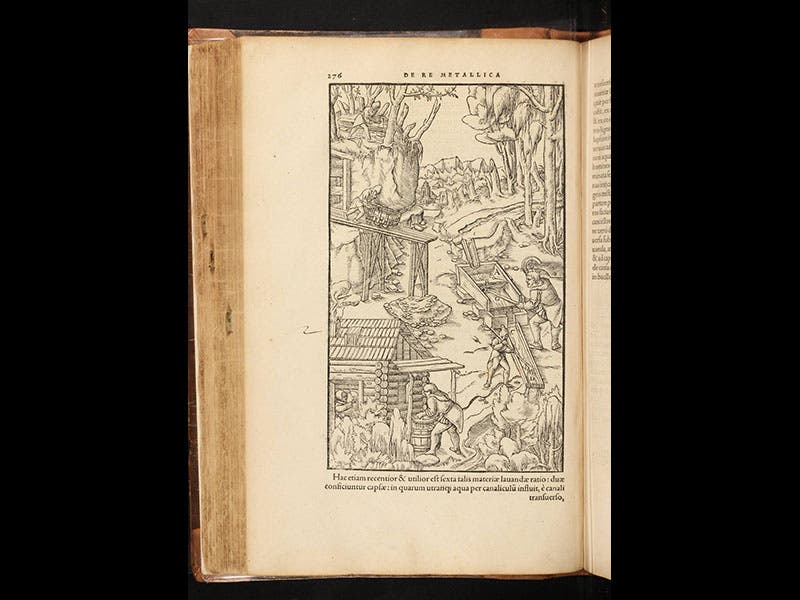Scientist of the Day - Georg Agricola
Georg Agricola, a Geman mining engineer, was born Mar. 24, 1494. In 1556, four months after his death, Agricola’s master work was published by the venerable Swiss publishing firm of Froben and Son. The book was called De re metallica--On Metallic Things--and it is essentially an encyclopedia of mining practices and metallurgical techniques. More importantly, it is a visual encyclopedia, graced with almost 300 illustrations, commissioned by Agricola and turned into woodcuts by Froben's craftsmen. The woodcuts show how to find metal-bearing veins (second image above), , how to pump mine shafts free of water (third image), how to construct waterwheels and hoists and hand-trucks, how to aerate mines with bellows (fourth image), and how to extract metals from ores, the extraction process being different for silver, copper, iron, and tin (fifth image). What is most impressive about these images, however, is the way Agricola and his artist created new pictorial conventions to help the viewer understand the intricacies of mine construction. Consider for example the first image above; it shows a mine-shaft cut away to reveal a water pump, with two pipes going down and one up, operated by a man turning a crank. These days we take cut-away drawings for granted, but in 1556 they were a complete novelty, a clever way to allow the viewer to peek inside a mine and yet still see the external structure. To help us understand what is in the wooden box that the cranksman operates, Agricola takes that apart, twice, once at the upper right, when the exterior is made invisible so we can see the crank and the two piston tubes inside, and again at the bottom, where the box is physically dismantled so we can see its construction
Most of these pictorial conventions--cut-away views, exploded views, multiple display of constituent parts--were so novel that many viewers, untrained in such conventions, must have had a hard time at first figuring out what was being depicted, thinking perhaps that the mine-shaft interior really was visible from the outside, or that the pump had multiple sets of cranks and pistons, some inside the machinery and some outside. But once the conventions are accepted, Agricola’s illustrations provides much more visual information than was previously available. The book is often hailed as the first book to contain illustrations of mining and metallurgical practices, which it was. But it is the new way these illustrations convey information that is the real innovation of De re metallica.
Dr. William B. Ashworth, Jr., Consultant for the History of Science, Linda Hall Library and Associate Professor, Department of History, University of Missouri-Kansas City










